9606 AN UNUSUAL LATE NEOCLASSICAL INLAID SATINWOOD SECRETAIRE COMMODE Danish. First Quarter Of The Nineteenth Century. Measurements: Height: 33 1/2″ (85.2 cm) Width: 44 1/2″ (113 cm) Depth: 20″ (50.6 cm)
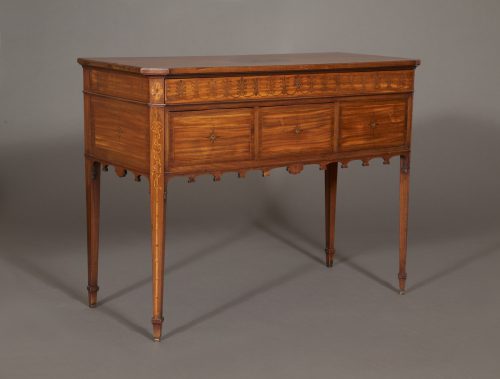
Research
Of satinwood with inlays of purple heart and ebony. The rectangular top with canted corners centered by an inlaid oval vignette depicting Ganymede being fed from a bowl, after Nicolai Abildgaard. The slim frieze drawer inlaid with repeating anthemion motifs, fitted as a secretaire with leather lined writing surface and retaining its original ink bottles and pen trays. Below are three deep drawers above an arcaded apron, each centered by an inlaid ebony ‘compass’ concealing at its centre an unusual circular lock. The whole raised on four continued square tapering legs headed by an inlaid paterae above an inlaid thyrsus and terminating in elegant shaped feet.
The establishment of the Danish Royal Academy of Fine Arts in 1754 and the Royal Furniture Emporium, which operated from 1777-1815, provided training and encouraged indigenous cabinet-making skills, emphasized the importance of foreign influences upon Danish design, and “established criteria for quality workmanship”1 in the applied arts. Developments in art and architecture in 19th century Denmark, influenced by English neoclassicism and German romanticism, led the period to become known as the “Golden Age.”
The period was dominated by the works of Gottlieb Bindesbøll, H.E. Freund and Nicolai Abildgaard, painters, architects and designers of furniture and interiors in the neoclassical style. They used ancient forms, such as the klismos, as well as classical motifs in their output, such as laurel, thyrsi, and anthemions, several of which are repeated in the present secretaire commode.
Each front leg of the commode is headed with an inlaid patera above a ribbon-tied thyrsic wand. The thyrsus, a symbol of fertility, is a staff topped with a pinecone and wound with ivy vines and leaves, carried by Dionysus and his followers. Most unusually, the staff is formed as if of bamboo. This curious feature may be a well-informed allusion to the piece’s further function as a writing table: of the many symbolic meanings of bamboo, in China it is sometimes associated with the Scholar in Hermitage.” The drawer frieze is decorated with a repeating anthemion motif, a device used similarly by Abildgaard on a pair of klismos chairs in the Museum of Decorative Arts, Copenhagen.
The top of the secretaire commode is centered by an inlaid oval vignette depicting a scene in Greek mythology from the life of Ganymede, a shepherd and Prince of Troy, considered the most beautiful of mortals. Here, Zeus has fallen in love with the attractive youth and disguised himself as an eagle in order to abduct the boy and take him to Olympus to serve as cup bearer to the gods. The inlaid design is executed after a drawing by the Danish artist Nicolai Abildgaard, now in the Metropolitan Museum (figure 1). Bertel Thorvaldsen, a pupil of Abildgaard and one of the foremost neoclassical sculptors, also modeled the scene in a sculpture of 1817, in which a kneeling Ganymede offers Zeus, as the eagle, a cup of the nectar that makes the gods immortal (figure 2).
The commode further is distinguished by the highly unusual feature of specially customized locks, which are designed so that the keyholes form the center of the marquetry starbursts, which are placed in the exact middle of the drawer. Furthermore, in order to resolve perfectly with the inlay, a special round keyhole was fabricated with conforming key, much in the manner of 18th and 19th-century clock winders.
Footnotes:
1. Gura, Judith. Sourcebook of Scandinavian Furniture: Designs for the 21st Century. New York [u.a.: Norton, 2007. Print. 16.
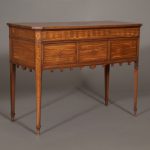
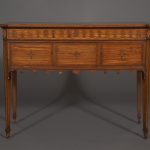
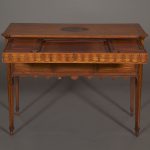
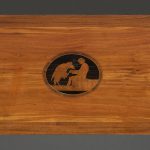


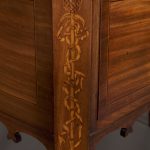
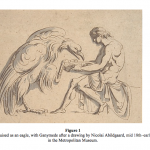
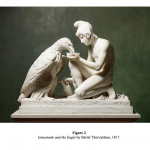
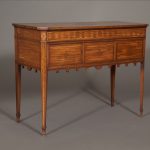
Comments are closed.